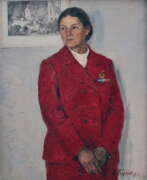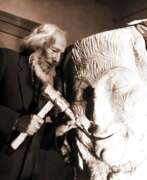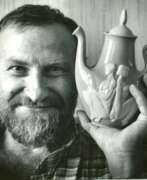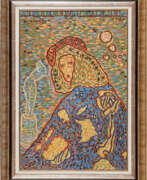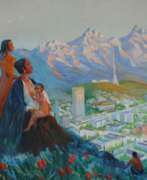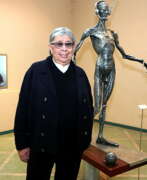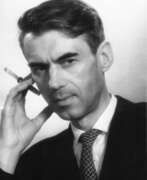Kazakhstan 20th century


Issa Abasovich Barkhanoyev (Russian: Исса Абасович Барханоев) was a Soviet and Russian Ingush artist of the last quarter of the twentieth and early twenty-first centuries. He is known as a painter, draughtsman, landscape painter, genre painter and poet, a self-taught artist.
Issa Barkhanoyev created more than 500 paintings during his career, in which, according to critics, he skillfully conveyed his deep thoughts and feelings through images and symbols, and these works of art epitomize spirituality and life philosophy. The works of the folk artist are in museums of the Republic of Ingushetia and private collections.
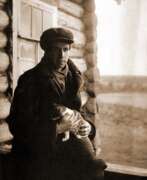

Pavel Ivanovich Basmanov (Russian: Павел Иванович Басманов) was a Soviet and Russian artist of the twentieth century. He is known as a painter, book graphic artist and illustrator.
Pavel Basmanov devoted his entire career, beginning in 1929, to book graphics, and was a member of the bureau of the graphic section of the Union of Artists. He is also known for his series of watercolor works, including "Old Siberia" and "Walking". His art was characterized by a unique approach based on religious motifs.
The master's works are in the collections of the State Russian Museum, the Tsarskoye Selo State Collection and private collections.
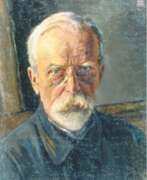

Yulii Yulyevich Blumenthal (Russian: Юлий Юльевич Блюменталь) was a Russian and Soviet artist of the first half of the twentieth century of German origin. He is known as a painter and graphic artist who played an important role in the development of Bashkir fine arts.
Yulii Blumenthal created portraits, landscapes and genre works, including those reflecting the culture and life of the Bashkir people, such as "Bashkir Rider" and "Behind Shearing Sheep". Being the director of the Bashkir State Art Museum in 1926-1935, the master played a significant role in laying the foundations of professional museum accounting and documentation.
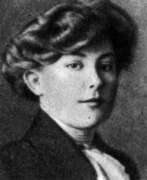

Vera Mikhailovna Ermolaeva (Russian: Ве́ра Миха́йловна Ермола́ева) was a Russian avant-garde artist, illustrator, and educator, renowned for her contributions to children's literature and modern art. Born in the village of Klyuchi, she emerged as a pivotal figure in the Russian avant-garde movement, known for her innovative approaches to book illustration and her role in shaping early 20th-century art education and theory.
Ermolaeva's career is marked by her significant involvement with the book-publishing studio "Today" (Segodnya) in Petrograd, where she, alongside other notable artists, produced hand-crafted picture books and lubki. Her illustrations for children's books, such as those written by Natan Vengrov and Alexander Vvedensky, reflect a unique blend of narrative and visual artistry, contributing to the development of a new genre of children's literature.
In addition to her illustration work, Ermolaeva's influence extended to art education. She played a crucial role at the Vitebsk Art School, inviting Kazimir Malevich to teach and eventually leading the institution. Her efforts alongside Malevich and others facilitated the formation of UNOVIS, a collective dedicated to exploring and promoting avant-garde art principles.
Ermolaeva's theoretical and practical work in the field of color theory at the State Institute of Artistic Culture (GINKHUK) further underscores her contributions to modern art. Her association with the "Association of Real Art" (Oberiu) and her involvement in creating avant-garde art circles highlight her commitment to exploring the intersections between art, theory, and society.
Her works, including "Still Life" and "The Concert. Composition on the Theme of Bernardino Licinio," are held in prestigious collections, such as the State Russian Museum, the State Tretyakov Gallery, the Pushkin Museum, the Museum of Modern Art (MoMA), and the Ludwig Museum, showcasing her enduring legacy in the art world.
For collectors and experts in art and antiques, Ermolaeva's story and creations offer a window into the vibrant world of the Russian avant-garde. Her dedication to art education, innovative approach to book illustration, and contributions to modern art theory make her a fascinating figure in the history of art.
To stay updated on new findings and auction events related to Vera Mikhailovna Ermolaeva's work, sign up for updates. This subscription will keep you informed about new product sales and auction events, allowing you to deepen your appreciation and understanding of this remarkable artist's legacy.
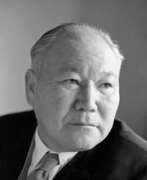

Ural Tansykbaevich Tansykbayev (Russian: Урал Тансыкбаевич Тансыкбаев) was a distinguished Uzbek painter of Kazakh descent, celebrated for his vivid and expressive works. Born on January 1, 1904, in Tashkent, Tansykbayev's artistic journey was profoundly influenced by Fauvism and French Expressionism, evident in his early work's increased decorativeness and vibrant use of color. His contributions to the Regionalist movement further defined his legacy, marking him as a pivotal figure in Uzbekistan's art history.
Throughout his career, Tansykbayev's art evolved, with a significant shift in the 1950s towards landscape painting, which became the main genre of his later works. His talent and contributions were recognized with numerous governmental awards, including the prestigious Order of Lenin and the Hamza State Prize of the Uzbek SSR in 1973. Tansykbayev's works are cherished globally and can be found in several museums, including the Ural Tansykbayev Memorial Museum in Tashkent, the State Tretyakov Gallery in Moscow, and the State Museum of Oriental Art, also in Moscow.
The Ural Tansykbayev Museum in Tashkent, established by his widow, Elizaveta Tansykbayeva, serves as a testament to his life and work. Opened in 1981, the museum houses not only his paintings but also the artist's studio, offering a personal glimpse into his creative world. This museum stands as a cultural landmark, celebrating the legacy of a man who significantly impacted Uzbek and Soviet art.
For collectors and art experts interested in Tansykbayev's profound and colorful works, signing up for updates on new product sales and auction events related to Ural Tansykbayev is highly recommended. This subscription ensures you stay informed about opportunities to own a piece of this legendary artist's legacy.


Mukhamedkhanafia Telzhanov (Russian: Мухамедханафия Тимирбулатович Тельжанов) was a distinguished Soviet and Kazakh artist, renowned for his expansive body of work that includes monumental paintings on revolutionary and military themes, genre pictures depicting the life of the Kazakh people, triptychs, landscapes, and portraits. Born on May 1, 1927, in what was then the Soviet Union, Telzhanov's artistic journey spanned across the mid to late 20th century, during which he made significant contributions to the world of art, embodying the spirit and culture of Kazakhstan through his creations.
Telzhanov's education and career were marked by notable achievements, including his studies in Saint Petersburg and Almaty, followed by his completion of studies at the prestigious Leningrad Institute of Painting, Sculpture, and Architecture named after I.E. Repin. His works, such as "Amangeldy Imanov" (1953), "The First Time" (1954), "Change", "Zhamal", "Mama Amina", and "Sounds of Dombra" (1955), among others, reflect his deep connection to his homeland and its people. Telzhanov's dedication to portraying the beauty, culture, and struggles of the Kazakh people earned him recognition as a People's Artist of the USSR and a corresponding member of the USSR Academy of Arts.
Beyond his artistic contributions, Telzhanov played a significant role in the educational realm, impacting the next generation of artists through his teaching positions at various institutions, including the Almaty Art and Theatre School, and later, the Kazakhstan State Art Gallery (now known as the A. Kasteev State Museum of Arts). His tenure as a professor and his leadership roles within the artistic community underscored his commitment to nurturing and advancing the arts within Kazakhstan.
Telzhanov's legacy is celebrated not only through his artworks but also through his contributions to the cultural and educational landscape of Kazakhstan. His works, characterized by their emotional depth and technical skill, continue to inspire art lovers, collectors, and students of art history, reflecting the enduring significance of his contributions to the cultural heritage of Kazakhstan.
For collectors and experts in art and antiques, the work of Mukhamedkhanafia Telzhanov represents a unique intersection of historical significance and artistic mastery. We invite you to sign up for updates related to new product sales and auction events featuring Telzhanov's work, ensuring you stay informed about opportunities to own a piece of this remarkable artist's legacy.
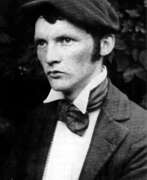

Heinrich Vogeler was a German artist and philosopher, a representative of the German Art Nouveau. A versatile and talented artist, he painted, watercolored, composed poems, designed, designed and decorated. Over time, his style of art changed over a wide range.
During World War I, from 1914 to 1917, Vogeler was on the Eastern Front as a volunteer and made sketches, which resulted in his pacifist sentiments.
In the mid-1920s he visited the Soviet Union several times and his impressions resulted in paintings in his own "complex style: "Karelia and Murmansk" (1926), "Building a New Life in the Soviet Republics of Central Asia" (1927), and "Baku" (1927). In 1931 Vogeler received an invitation to work in the USSR. The coming to power of the Nazis in Germany made it impossible for him to return home, and after Hitler's invasion Vogeler among many was deported to the Kazakh SSR, where he died.


